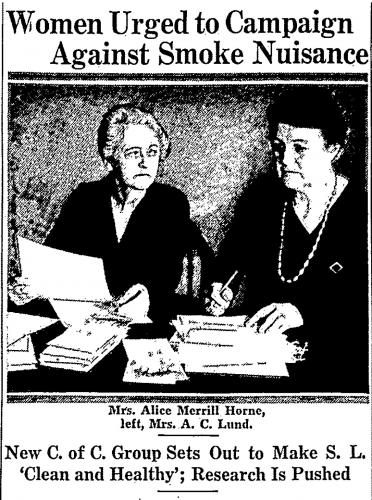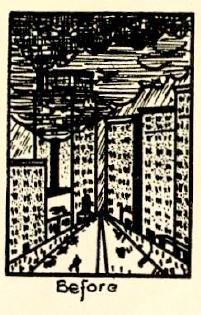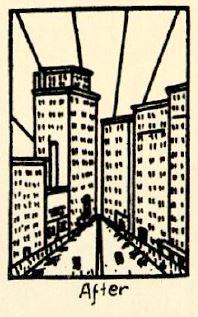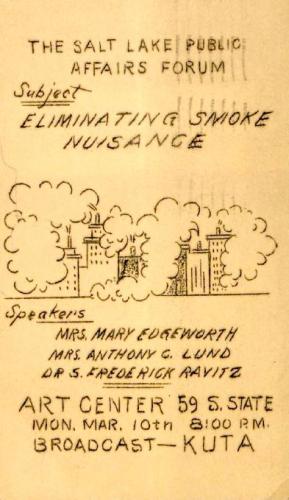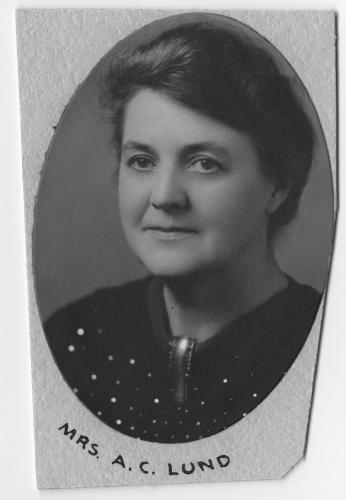Salt Lake Women's Chamber of Commerce
Crusaders Against Smoke
It was up to the women of Salt Lake City to solve the smoke nuisance problem, as declared in the March 1936 Salt Lake Telegram article announcing the creation of the Salt Lake Women’s Chamber of Commerce (WCOC). The women of Utah, like in other states across the country, wanted to live in cleaner, healthier cities. They also wanted Salt Lake City become a tourist attraction, the gateway to the West, a destination for winter sports. Air quality activism was the Salt Lake WCOC's focus which set them apart from other women's clubs who campaigned for a variety of causes. Evident in the preamble of the Salt Lake WCOC constitution (below), the women were taking direct aim at the smoke nuisance problem and were equipped with solutions on how to achieve fresh air along the Wasatch Front -- by making smokeless coal readily available. Despite their namesake, the WCOC did not have an official affiliation with the Salt Lake Chamber of Commerce.
Preamble, Constitution of the Salt Lake City Women's Chamber of Commerce (1936)
"We, the women of Salt Lake City in order to rid ourselves of the death-dealing coal smoke which infests our community and our state; to establish our belief that we have the key to the solution of this problem; to make available for the people a solid smokeless fuel that will materially aid us in comfort; to insure health and happiness, for us, and for our posterity; to provide a means of stabilizing labor and manufacturing; to advance the financial security of the people and the integrity of the home; to avert exploitation and dissipation of our coal resources; to stimulate advertising of our vast potential wealth; to induce tourist travel to this, the Center of Scenic America; to stop the migration of our inhabitants to cleaner cities; to enlarge our scope in art, in music and cultural education; to promote the general welfare and to influence public opinion; to conserve and develop such inherent rights as indigenous to the soil.
WE DO herby ledge our support to bring to fruition by all reasonable means, such benefits as shall accrue to the people, through proffered patents and patents pending, or such other processes as may be made available for the realization of our object, -- A SMOKELESS CITY."
Salt Lake Women's Chamber of Commerce Communication Strategy
The SL WCOC had a strategic approach to bring clean air to Wasatch Front by focusing on improving the local economy both by bolstering local coal processing and promoting a cleaner city as tourist destination, especially for winter sports. Their communication strategy was illustrative and simplistic - even their letterhead of the Salt Lake City street scene before and after smokeless fuel was demonstrative. Before smokeless fuel the sky is dark, smoky, and polluted vs. the clear and sunny sky after smokeless fuel. See the "Has Science Solved the Smoke Nuisance Problem" displayed in the Women's Clubs United page for similar graphic messages illustrating the power of smokeless fuel.
The first women who led the charge of creating the SL WCOC were Mrs. Cornelia [Anthony C.] Sorenson Lund and Mrs. Alice Merrill Horne. Mrs. Lund would go on to be re-elected as president for nearly 10 years. At its inception, the group had over 3,000 members with a goal of over 15,000. The members of the SL WCOC were assertive, hardliner activists with a strategic mission to introduce smokeless coal to Salt Lake City. In a letter to the Salt Lake City Mayor and Commissioner in 1940, they opened with "The Women's Chamber of Commerce regrets that Smoke Abatement and not Smoke Elimination has been the method used in attempting to clean Salt Lake City from smoke." The letter went on to explain that the abatement efforts only regulate how one fires coal-burning equipment such as ovens and furnaces but will "never stop the smoke and soot from filling our atmosphere with disease and disaster." Campaign efforts included educational leaflets, letters, a long-standing radio program on KSL, luncheons, talks, and extensive press coverage of their efforts and achievements towards smokeless coal in Utah. In the Crusade Against Smoke handout below, created by the Women's Chamber of Commerce, facts and impacts of smoke and coal on health are charted. In informational materials such as this, the WCOC makes the case that smoke is the cause of poor health, even death, and wastes time and resources while diminishing the attractiveness of Salt Lake City. Their campaign was focused on educating the public on smokeless fuel, all while promoting the Utah coal and natural resource industry. In their Utah Resources and Solid Smokeless Fuel handout, Utah's resources and Salt Lake City's air quality problem, "highest rate of soot-fall of any city in the world" are laid out with compelling facts and figures. It was claimed that $20k was spent per day for gas and oil on resources outside of Utah, while the state contains 35 times the largest commercial supply of crude oil of any other state. The SL WCOC was ardently supporting Utah industry and economy.
Crusade Against Smoke Handout, Salt Lake Women's Chamber of Commerce, circa 1937
The Women’s Chamber of Commerce worked with the American Lurgi Corporation, based in New York City, to both test Utah coal in the smokeless fuel process and draft plans for a smokeless fuel coal processing plant in Utah. With most of the funds raised by the Women’s Chamber of Commerce, several tons of Utah coal were shipped to the Lurgi plant in Frankfurt, Germany to undergo a commercial test in order to determine salient features of a proposed plant to be constructed in Utah. The communication, shipping receipts, and testing reports of the Utah coal test can be found in the Cornelia Sorenson Lund Papers held at Brigham Young University's Tom Perry Special Collections at the Harold Lee Library, which hold extensive documents from the Lund’s leadership of the Women’s Chamber of Commerce. The test revealed that Utah coal could be processed for smokeless fuel and was also rich in by-products. The WCOC proposed that the coal byproducts could be used to fund Utah's smokeless fuel plant, which the Lurgi Corporation even developed blueprint plans for.
While the educational campaign on the benefits of smokeless fuel weren't immediately effective, a smokeless fuel coal processing plant did eventually come to Utah. Cornelia Sorenson Lund was waiting for the first load of smokeless fuel to arrive in Salt Lake City in December 1948, according to the Deseret News. In 1949, Lund is quoted in the Provo Daily Herald as stating "there is now a processed smokeless fuel available to anyone who desires it through a plant in Carbon county where over 100 tons of coal are processed daily."
To learn more about the Salt Lake Women's Chamber of Commerce, historian Ted Moore, PhD, chronicled the WCOC's efforts and impact in "Democratizing the air: The Salt Lake Women's Chamber of Commerce and Air Pollution, 1936-1945" Environmental History 12 (January 2007):80-106.
Cornelia Sorenson Lund (1882 -1959), long-time President of the WCOC, was an extremely accomplished woman in her own right. Cornelia studied music at the University of Utah and Brigham Young University and taught piano and was a church organist. During Cornelia’s studies, she met music-lover and husband, Anthony C. Lund. Anthony went on to be the head of the Brigham Young University Music Department and the Mormon Tabernacle Choir in Salt Lake City. While her husband taught at BYU, Cornelia served on the Relief Society Board and headed of the Utah Red Cross during WWI. After the death of her husband, Cornelia Sorenson Lund was elected as the County Recorder for Salt Lake City (1939 to 1946), elected to the Utah House of Representatives (1933-1935), and elected to the Utah Senate (1937 to 1939) (page 36, Women Legislators of Utah, 1896-1993).

